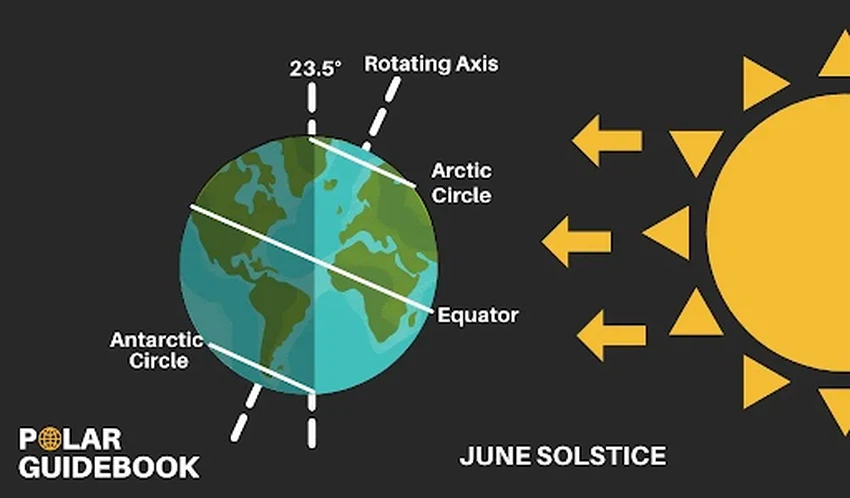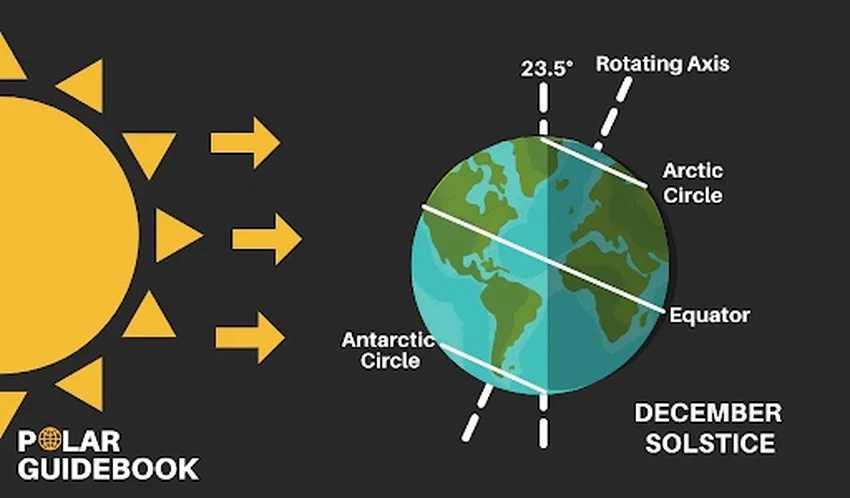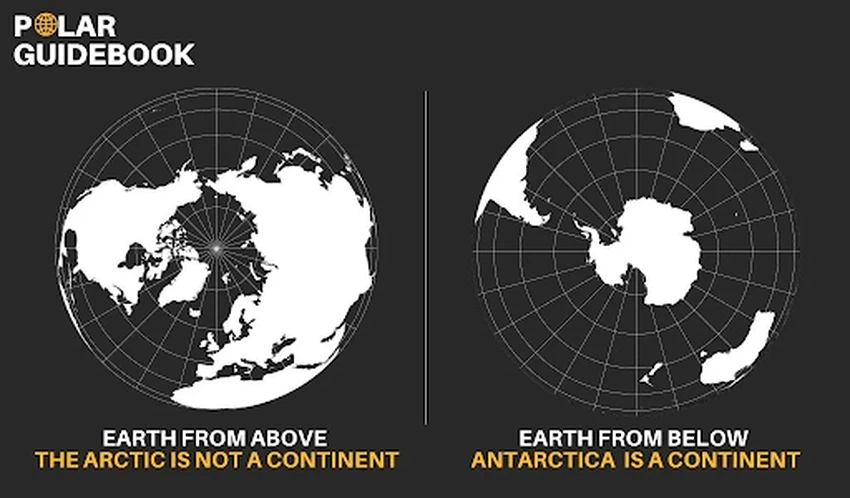Comprehensive report: 12 points that reveal the differences and similarities between the North Pole and the South Pole of the Earth
Weather of Arabia - At first glance, the snow-covered poles in the far north and far south of our planet may seem similar, but there are many differences between the North Pole and Antarctica, including the climate, animals, plants, population and what lies under the ice and snow, and we will address through This comprehensive report presents the differences and similarities between the northern and southern poles.
Location of the North Pole and Antarctica
1. Arctic: Locating the North Pole can be confusing because there are many different ways, but the most accepted definition of the North Pole is everything above the Arctic Circle which is 66.5°N latitude. This includes parts of Alaska, Canada, Greenland, Russia and Scandinavia.
2. Antarctica: Antarctica is the large continent that lies above the South Pole.
Similarities Between Antarctica and the North Pole
Let's first start by reviewing the similarities between Antarctica and the North Pole:
1. Both Antarctica and parts of the Arctic are deserts
Antarctica and parts of the Arctic are considered deserts, albeit cold. A region is classified as a desert if it receives less than 250 mm of precipitation per year, including rain, snow or fog.
Antarctica averages 150 mm of precipitation per year making it a desert, and the rate may range from about 50 mm to 200 mm per year near the coast.
Much of the Arctic is desert with an average precipitation of 150-250 mm, which is lower in some parts of the Arctic Basin and the Canadian Arctic Archipelago.
However, there are regions in the Arctic that are not considered deserts, where there is much more precipitation, such as Greenland, which averages 400 mm or more per year.
Antarctica (14.2 million km2) and the North Pole (13.9 million km2) are the largest deserts on Earth, followed by the Sahara Desert (9.2 million km2).
2. The Arctic and Antarctica experience “polar nights”
The two polar regions have polar nights spanning several days. This occurs when the sun has been below the horizon for more than 24 hours, and it is dark during the day.
Polar nights begin on the winter solstice, around December 21 in the North Pole and around June 21 in Antarctica, and last a few days so that the duration increases as we get closer to the poles. For example, in Barrow, Alaska, the northernmost city in the United States, the sun does not shine for about 66 days of the year.

(The figure represents the solar radiation that the Earth receives on the day of the solstice in the month of June, when the sun remains shining at the North Pole (the midnight sun) and sets below the horizon at the South Pole (polar nights))
3. The North Pole and Antarctica receive the midnight sun
While the polar nights begin in the Arctic and Antarctica on the winter solstice, the opposite occurs on the summer solstice around June 21 in the Arctic and around December 21 in Antarctica, where the days of the "midnight sun" begin, which is when The sun is above the horizon 24 hours a day, so it is always visible and luminous.
Similar to the polar nights, the duration of the midnight sun increases as it approaches the poles, on Svalbard, a group of islands located halfway between Norway and the North Pole and is one of the northernmost inhabited regions of the world, there the midnight sun lasts for 124 days in the year.
At the same poles, the sun rises once a year, remains in the sky for 6 months before sets once a year and does not rise again for 6 months.

(The figure represents the solar radiation that the Earth receives on the day of the solstice in the month of December, when the sun remains shining in the south pole (midnight sun) and sets below the horizon at the north pole (polar nights))
The difference between Antarctica and Antarctica
Now, let's look at the differences between Antarctica and the North Pole:
1. Antarctica is much colder than the North Pole
Arctic temperatures vary greatly across the region and between seasons. Normally, temperatures vary from (−37) °C in winter to (10) °C in summer.
Since temperatures are above freezing in summer, they allow the snow to thaw and allow plants to grow.
Meanwhile, Antarctica is colder than the North Pole and is the coldest continent on Earth. Average annual temperatures there range from about (-10) degrees Celsius on the coast to (-60) degrees Celsius in the interior. In the most extreme parts of the continent, temperatures drop below (-80) degrees Celsius in winter.
Read also: Which is colder, the North Pole or the South Pole, and why?
2. Antarctica is an ice cap devoid of vegetation, while the Arctic is a tundra where the snow melts and plants grow during the summer
Although both the Arctic and Antarctica can be called deserts due to the low rate of precipitation, an alternative way to classify climates is the "Köppen climate system" which takes into account both precipitation and temperatures.
Under this system, the North Pole and the Antarctic fall under different types of polar climates, one representing the ice cap and the other representing the tundra.
Antarctica is mostly an ice cap because the average monthly temperatures do not exceed 0°C, while the Arctic is mostly tundra because the warmest month has an average temperature of 0-10°C.
The main difference between the two is that the snow melts from the tundra during the summer months, allowing vegetation to grow while in the ice cap snow remains all year round.
However, some of the northernmost Antarctic Peninsula exceed 0°C in the summer months, and thus can be classified as tundra. This is the only part of Antarctica where vegetation is present during the summer.
3. The North Pole and Antarctica are home to completely different animals
The Arctic has a large number of animals including: arctic fox, polar bear, snowy owl, arctic hare, arctic wolf, reindeer, moose, and more.
At the southern tip of the planet, there is a completely different story. Antarctica does not have any natural terrestrial mammals, reptiles or amphibians. You will find some invertebrates such as earthworms, mollusks, and some insects. However, it is famous for marine mammals, such as whales, seals, and birds. Including penguins and albatrosses.
4. There are more diverse flora in the Arctic than in Antarctica
Both the Arctic and Antarctica are home to low-lying plant species such as algae, liverworts, lichens, and fungi, which are well adapted to survive in harsh climates.
However, the big difference between the two is when we look at vascular plants (i.e. flowering plants). In Antarctica, there are only two types of vascular plants, hair grass and pearlwort.
Meanwhile, the Arctic is home to more than 2,200 different species of vascular plants, due to the warmer Arctic climate that allows some soil to melt each year for plants to grow, and this is known as active soil.
5. There are 4 million permanent residents in the Arctic, while Antarctica is not inhabited by humans
The climate in the Arctic may be harsh, but people have been finding ways to live there for more than 20,000 years, and it is currently estimated that 4 million people live in the Arctic which includes indigenous peoples as well as modern towns and cities.
Some of the indigenous communities include the Inuits in Canada and Yup'ik in Alaska, where they make up about 10% of permanent residents in the Arctic although this varies by region: from more than 60% in Greenland to less than 1% in parts of Russia.
The rest reside in modern towns and cities, including Murmansk (Russia), Norilsk (Russia), and Tromsø (Norway).
By contrast, humans do not live in an extremely cold Antarctic climate, but there are approximately 1,000 to 5,000 people from around the world living in research centers in Antarctica, and some may spend an entire year before returning home.
Read also: Is it possible to go on a tourist trip to Antarctica?
6. Antarctica is a continent but the North Pole is not
Antarctica is a land mass that was connected to India and Africa, and over time drifted south and froze, however, it still contains mountain ranges and valleys.
Antarctica is located on the Antarctic tectonic plate, and it is large and distinct from other land masses on Earth, which makes it eligible to be considered a continent. It is the fifth largest continent on Earth, larger than Europe and Australia.
On the other hand, most of the Arctic is sea ice that settles over the ocean, so it is not considered a continent.

(The figure represents a view of the Earth from the top (on the left of the picture) showing the North Pole (Artcic), which is not considered a continent, but rather includes parts of 8 countries, and a view of the Earth from the south showing Antarctic)
7. Antarctica contains no countries while the Arctic contains parts of 8 countries
Although many countries made territorial claims in Antarctica between 1840 and 1940, all of those countries agreed to set these claims aside when the Antarctic Treaty was formed in 1961, so there are no official states in Antarctica.
On the other hand, the Arctic region covers the northern parts of 8 countries, namely Canada, Denmark (Greenland), Iceland, Norway, Sweden, Finland, Russia and the United States.
8. No country owns Antarctica while parts of the North Pole are under the jurisdiction of other countries
The whole of Antarctica is completely devoid of any monarchy, but the Antarctic Treaty was agreed upon on June 23, 1961 by 54 nations.
On the other hand, all the land in the Arctic, and up to 12 nautical miles (22 km) from coast to sea, is owned by 8 different countries, namely: Canada, Denmark, Finland, Iceland, Norway, Russia, Sweden and the USA. 12 nautical miles from the coast is considered international waters and is not owned by anyone.
The Arctic itself is located on sea ice that lies more than 12 nautical miles from the coast, and therefore is not owned by anyone.
9. The timing of the seasons is opposite
Although the North Pole and Antarctica have a similar pattern of seasons, they are completely opposite in timing. In the Arctic, summer runs from June to September, and winters from December to March.
Conversely, summer is from December to March in Antarctica, and winter is from June to September, which is due to the tilt of the Earth.
With the timing of the seasons reversed, the timing of the polar days and the midnight sun in the Antarctic is also reversed compared to the North Pole.
There are only two days in the year when the amount of daylight is equal at the North Pole and the Antarctic, and that is the vernal equinox and the autumnal equinox that occur in March and September.
Arabia Weather App
Download the app to receive weather notifications and more..



